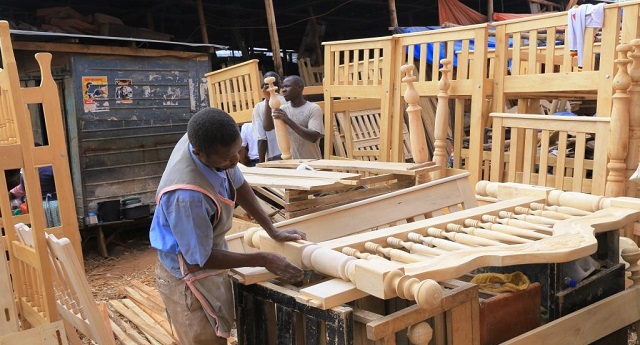
Over 400,000 youths enter the labour force to compete for 9,000 jobs annually
Kampala, Uganda | THE INDEPENDENT | Cash crop production, light manufacturing, construction, agro-processing, wholesale and retail trade, financial services, insurance, transport and tourism, have been identified as key sectors that need intentional support to create large scale job opportunities for young men and women in Uganda.
This is according to new research results released by the Makerere University-based Economic Policy Research Centre -(EPRC) and the African Economic Research Consortium (AERC) from a study titled “Work and income for young men and women in Africa: A Case of Uganda.
Dr John Mutenyo, a lecturer in the College of Business and Management Sciences who was involved in the study said Uganda has 53 per cent of young people below 15 while 87 per cent of youth were in insecure, unsafe informal jobs. He said the areas that they suggested were found to employ more youth and generate more income for them.
He says their model, heavy manufacturing is not an option for now. Generally, it remains unclear what works to support the youth in the labour market with different programmes such as the youth livelihood programme not yielding much in terms of skilling and job creation. It is estimated that over 400,000 youths enter the labour force to compete for 9,000 jobs annually.
While the Uganda study context was authored by Dr John Mutenyo, Dr Faisal Buyinza and Dr Wilson Asiimwe all from the College of Business and Management Sciences, this was nine-country research covering Egypt, Ethiopia, Kenya, Mali, Mozambique, Nigeria, Senegal, Tunisia and Uganda.
Continent-wide, researchers looked at “work and employment for young men and women: political economy and social equity approach to the employment potential of specific sectors and subsectors in African economies”.
Speaking at the results dissemination workshop on Thursday, Dr Prof Abebe Shimeles, the AERC Director of Research stressed the significance of this study saying policymakers are aware that the biggest policy question today, is creating employment for young people. Shimeles said that while one in three young people are employed, they are often engaged in poor quality jobs making them vulnerable to job losses and poverty.
He said young people are three times as likely as adults to be unemployed while young women are disproportionately affected. He noted that out of the 54 million young people that are neither in employment nor in education or any training, 62 percent were female.
On her part, Dr Sarah Ssewanyana, the EPRC Executive Director said the study was particularly important and timely as it answers the question of “Where do we place our youths to ensure that they benefit from what is going on in the country, aware that Covid-19 disrupted their lives.
On the key barriers to youth employment, the report singled out leakages in terms of high import volumes of commodities that could be produced locally hence denying youth employment opportunities.
The study therefore recommends that incentives be provided to firms that practice import substitution and use locally produced raw materials so that the value chain and multiplier process takes place within the economy.
*****
URN
 The Independent Uganda: You get the Truth we Pay the Price
The Independent Uganda: You get the Truth we Pay the Price




iwant to join u